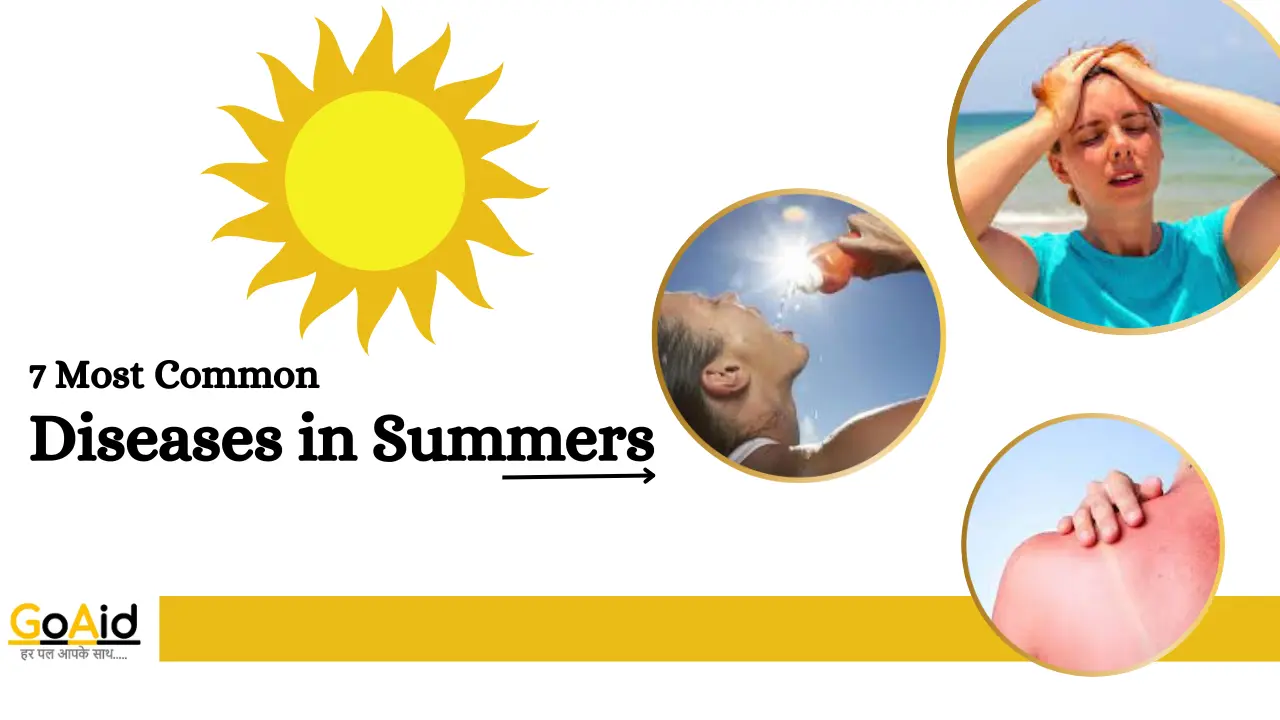If you live in India, you must have enjoyed your summer holidays at your ŌĆ£Nani Ka GharŌĆØ, but nowadays, we can see the severe impact of heat waves and abnormal temperature rises in summer Diseases. You might not be aware but your Grandma must be aware that many diseases affect people normally in summer.
Knowing about those common diseases and complete details about them will help you to prevent yourself from them and if you get affected, then youŌĆÖd also be aware of how you can treat yourself by following some guidelines. If you are also excited to know about the 7 Most Common Diseases in Summer, then read our blog to the end.
So, letŌĆÖs start:
7 Most Common Diseases in Summers
These are the 7 Most Common Summers Diseases.
- Heat Stroke
- Dehydration
- Food Poisoning
- Diarrhea
- Sunburn
- Heat Rash
- Mosquito-borne Diseases (such as Dengue, Chickenpox, and Malaria)
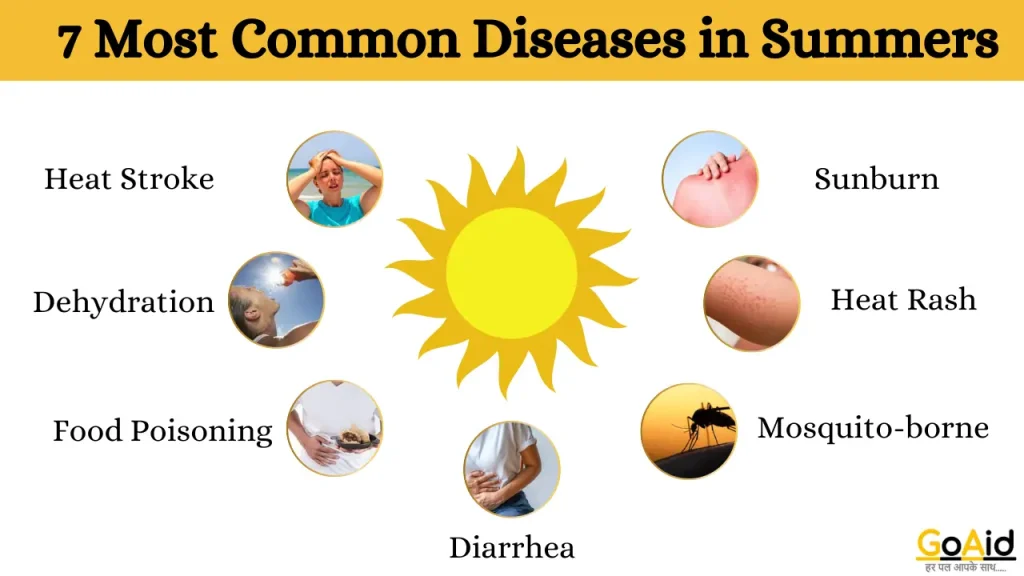
7 Most Common Diseases in Summer
1. Heat Stroke: Most Common Diseases in Summer
Heat stroke, also known as sunstroke, is a severe heat-related illness that occurs when the bodyŌĆÖs temperature regulation system fails due to prolonged exposure to high temperatures or physical exertion in hot environments. It is a medical emergency that requires immediate attention. If not treated promptly, heat stroke can cause damage to the brain, heart, kidneys, and muscles, and can be fatal.
Symptoms of Heat Stroke
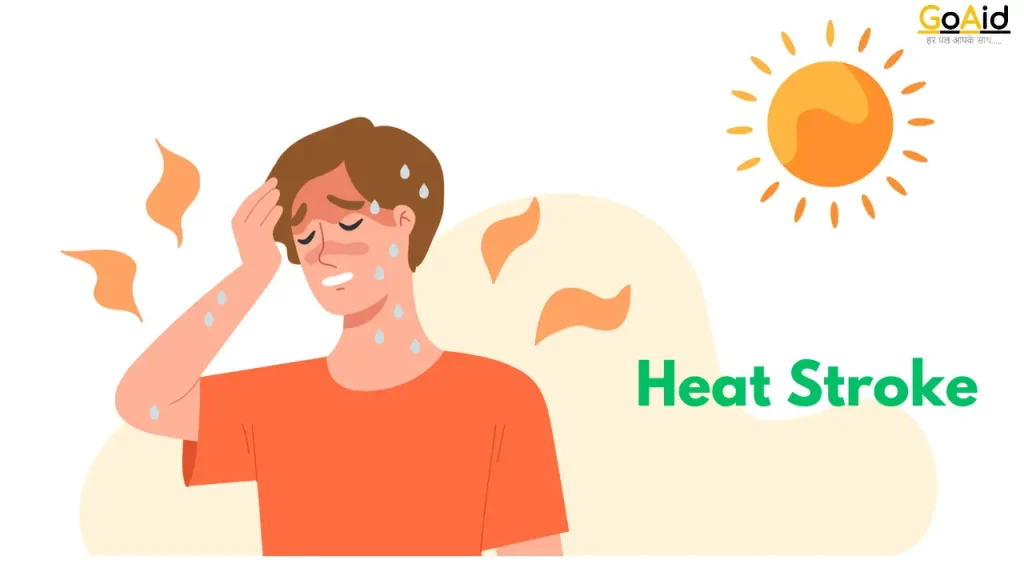
The symptoms of heat stroke can develop rapidly and may include:
- High Body Temperature: A core body temperature of 104┬░F (40┬░C) or higher.
- Altered Mental State or Behavior: Confusion, agitation, slurred speech, irritability, delirium, seizures, or coma.
- Nausea and Vomiting: Feeling sick to the stomach or vomiting.
- Flushed Skin: The skin may turn red as the body temperature increases.
- Rapid Breathing: Fast, shallow breathing.
- Racing Heartbeat: A rapid pulse that can be strong or weak.
- Headache: A throbbing headache.
- Lack of Sweating: In heatstroke brought on by hot weather, the skin will feel hot and dry to the touch. In heatstroke brought on by strenuous exercise, the skin may feel moist.
Causes of the Disease
Heat stroke can be caused by:
- Exposure to a Hot Environment: Prolonged exposure to high temperatures, particularly in combination with high humidity.
- Strenuous Activity: Engaging in physical exertion in hot weather without adequate hydration.
- Dehydration: Insufficient intake of fluids, which impairs the body’s ability to sweat and regulate temperature.
- Certain Medications: Drugs that affect the bodyŌĆÖs ability to stay hydrated and respond to heat, such as diuretics, antihistamines, beta-blockers, and certain psychiatric medications.
- Alcohol Consumption: Excessive alcohol intake can affect the bodyŌĆÖs ability to regulate its temperature.
Treatment
Immediate treatment for heat stroke is crucial and includes the following steps:
- Call Emergency Services: Seek medical help immediately if a heat stroke is suspected.
- Cool the Person: Move the person to a cooler place, preferably indoors or in the shade.
- Lower Body Temperature: Use any available means to cool the person down. This can include immersion in a cool bath or shower, spraying with a garden hose, sponging with cool water, or placing ice packs or wet towels on the body.
- Hydrate: If the person is conscious and able to drink, provide cool water or sports drinks. Avoid alcohol and caffeine.
- Monitor and Support: Continue cooling efforts until emergency medical personnel arrive. Monitor the personŌĆÖs breathing, and be prepared to perform CPR if necessary.
How to Prevent Ourselves from This?
Preventing diseases in summer-like heat stroke involves taking steps to avoid overheating and dehydration:
- Stay Hydrated: Drink plenty of fluids throughout the day, even if youŌĆÖre not thirsty. Water and sports drinks are the best choices.
- Wear Appropriate Clothing: Choose lightweight, loose-fitting, and light-colored clothing.
- Avoid Sun Exposure: Stay indoors during the hottest parts of the day, typically between 10 a.m. and 4 p.m. If you need to be outside, take frequent breaks in the shade or indoors.
- Use Sunscreen: Protect your skin from sunburn, which can affect your body’s ability to cool itself.
- Avoid Strenuous Activities: Limit physical activities, especially in direct sunlight. If exercise is necessary, do it during cooler parts of the day.
- Never Leave Anyone in a Parked Car: This is a common cause of heat stroke in children and pets. Temperatures inside a parked car can rise rapidly.
- Acclimate to the Heat: If youŌĆÖre not used to high temperatures, take it easy until your body adjusts. Gradually increase your exposure to heat over several days.
2. Dehydration: Symptoms, Causes, & Treatment
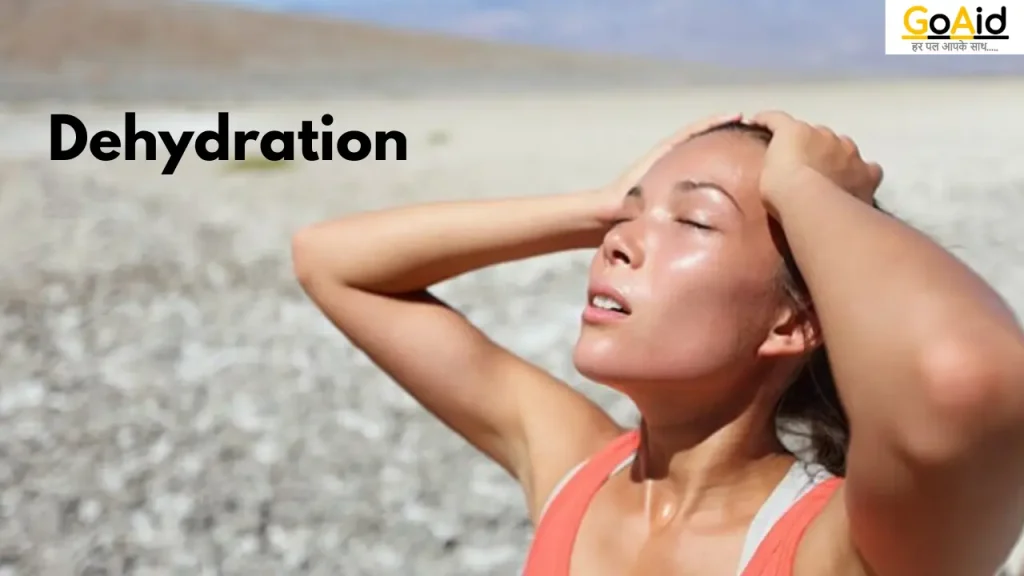
Dehydration occurs when the body loses more fluids than it takes in, leading to an insufficient amount of water to carry out normal bodily functions. This imbalance can disrupt vital processes, affecting everything from temperature regulation to waste elimination. Dehydration can range from mild to severe and can be particularly dangerous for young children, older adults, and individuals with chronic illnesses.
Symptoms of Dehydration
The symptoms of dehydration can vary depending on the severity but may include:
- Thirst: One of the first signs of dehydration.
- Dry Mouth and Swollen Tongue: A parched sensation and swollen, sticky tongue.
- Fatigue: Feeling unusually tired and lethargic.
- Dizziness or Lightheadedness: Feeling faint or unsteady.
- Dark Urine: Urine is darker than usual and has a strong odor.
- Decreased Urine Output: Producing less urine than normal.
- Dry Skin: Skin that feels cool and clammy, and may not bounce back when pinched.
- Headache: A persistent headache that doesnŌĆÖt improve with hydration.
- Confusion or Irritability: Cognitive impairments and mood swings, particularly in severe cases.
Causes of the Disease
Dehydration can be caused by several factors, including:
- Insufficient Fluid Intake: Not drinking enough water, especially during hot weather or when ill.
- Excessive Sweating: Losing fluids through sweat due to high temperatures, vigorous exercise, or fever.
- Illness: Conditions such as vomiting, diarrhea, and fever can lead to significant fluid loss.
- Increased Urination: Certain conditions, such as diabetes, and medications like diuretics can increase urination and fluid loss.
- Excessive Alcohol Consumption: Alcohol can lead to increased urine production and fluid loss.
Treatment
Treating dehydration involves replenishing the lost fluids and electrolytes:
- Rehydrate: Drink plenty of water. In cases of mild dehydration, water may be sufficient.
- Oral Rehydration Solutions (ORS): These solutions contain electrolytes and can be particularly effective for rehydration, especially if dehydration is caused by illness.
- Electrolyte-Rich Fluids: Sports drinks, coconut water, and broths can help restore electrolyte balance.
- IV Fluids: In severe cases, intravenous fluids may be necessary to quickly rehydrate the body and restore electrolyte balance.
- Treat Underlying Causes: Address any underlying conditions, such as infections or chronic illnesses, that may contribute to dehydration.
How to Prevent Ourselves from this?
Preventing dehydration involves maintaining adequate fluid intake and managing fluid loss:
- Drink Plenty of Fluids: Aim to drink at least 8 glasses of water a day, and more if youŌĆÖre active or in a hot environment.
- Monitor Fluid Loss: Pay attention to signs of dehydration such as dark urine, and increase fluid intake accordingly.
- Stay Cool: Avoid excessive heat and stay in the shade or air-conditioned environments during hot weather.
- Balance Electrolytes: If youŌĆÖre sweating heavily, consume drinks that contain electrolytes to replace whatŌĆÖs lost through sweat.
- Limit Alcohol and Caffeine: These substances can increase urine production and fluid loss.
- Eat Hydrating Foods: Include fruits and vegetables with high water content, such as cucumbers, watermelon, and oranges, in your diet.
- Be Cautious When Ill: Increase fluid intake if you are experiencing symptoms like vomiting, diarrhea, or fever. ORS can be particularly useful in these situations.
3. Food Poisoning
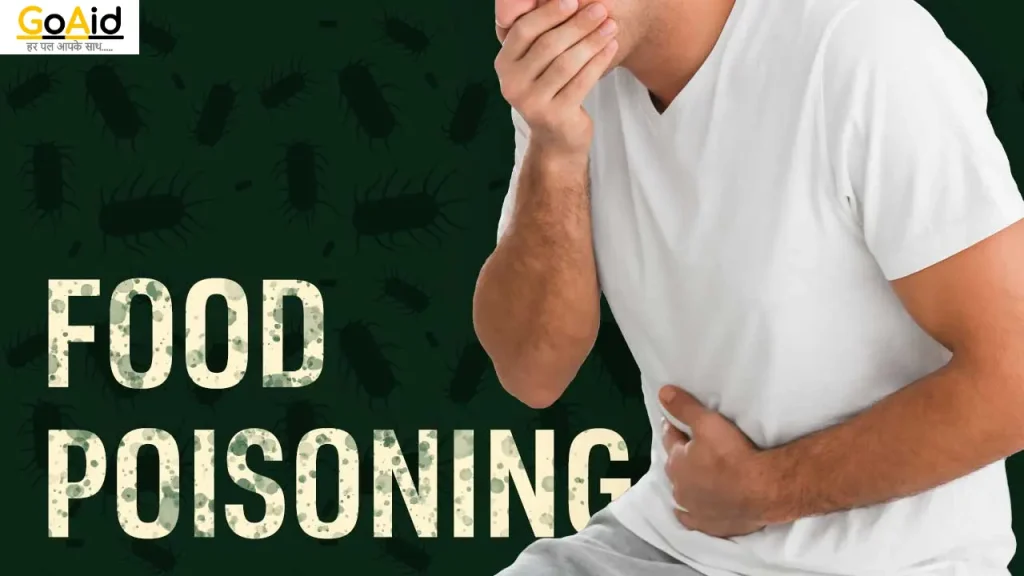
Food poisoning, also known as foodborne illness, occurs when you consume contaminated food or beverages. The contamination can be due to bacteria, viruses, parasites, or toxins. Food poisoning can lead to a range of symptoms and can be particularly severe in young children, older adults, pregnant women, and individuals with weakened immune systems.
Symptoms of the Disease
The symptoms of food poisoning can vary depending on the contaminant but typically include:
- Nausea and Vomiting: Feeling sick and vomiting soon after eating contaminated food.
- Diarrhea: Frequent, loose, or watery stools.
- Abdominal Pain and Cramps: Severe stomach pains and cramps.
- Fever: Elevated body temperature.
- Fatigue and Weakness: Feeling extremely tired and weak.
- Headache: A common Disease in Summer, with symptoms accompanying other gastrointestinal issues.
- Loss of Appetite: Reduced desire to eat due to nausea and discomfort.
Causes of the Disease
Food poisoning can be caused by:
- Bacteria: Common bacteria that cause food poisoning include Salmonella, Escherichia coli (E. coli), Listeria, and Campylobacter.
- Viruses: Norovirus and Hepatitis A are common viral causes.
- Parasites: Organisms such as Giardia and Cryptosporidium can contaminate food and water.
- Toxins: Certain bacteria, like Staphylococcus aureus and Clostridium botulinum, produce toxins that can cause illness.
- Contaminated Food and Water: Consuming food or water that has been contaminated by pathogens, often due to poor hygiene, improper cooking, or cross-contamination.
Treatment
Treatment for food poisoning typically focuses on managing symptoms and staying hydrated:
- Hydration: Drink plenty of fluids to prevent dehydration. Oral rehydration solutions (ORS) can help replenish lost electrolytes.
- Rest: Get plenty of rest to help your body fight off the infection.
- Medications: Over-the-counter medications like anti-diarrheal and anti-nausea drugs can alleviate symptoms. In some cases, antibiotics may be necessary for bacterial infections.
- Seek Medical Attention: If symptoms are severe or persistent, or if the individual is very young, elderly, pregnant, or has a compromised immune system, seek medical attention. Hospitalization may be necessary for severe cases.
How to Prevent Ourselves from this?
Preventing food poisoning involves proper food handling and hygiene practices:
- Wash Hands and Surfaces: Always wash your hands with soap and water before handling food and ensure that all cooking surfaces and utensils are clean.
- Cook Food Thoroughly: Ensure that food, especially meat, poultry, eggs, and seafood, is cooked to the recommended temperatures to kill harmful pathogens.
- Avoid Cross-Contamination: Use separate cutting boards and utensils for raw and cooked foods. Keep raw meat away from other foods.
- Store Food Properly: Refrigerate perishable foods within two hours and keep your refrigerator at or below 40┬░F (4┬░C).
- Avoid Risky Foods: Be cautious with foods that are prone to contamination, such as raw or undercooked eggs, unpasteurized milk and juices, and raw shellfish.
- Use Safe Water: Ensure that the water you use for drinking, cooking, and washing food is clean and safe.
- Be Mindful of Food Sources: Be cautious about where you buy your food, especially when traveling. Choose reputable restaurants and be wary of street food in areas with poor sanitation.
4. Diarrhea
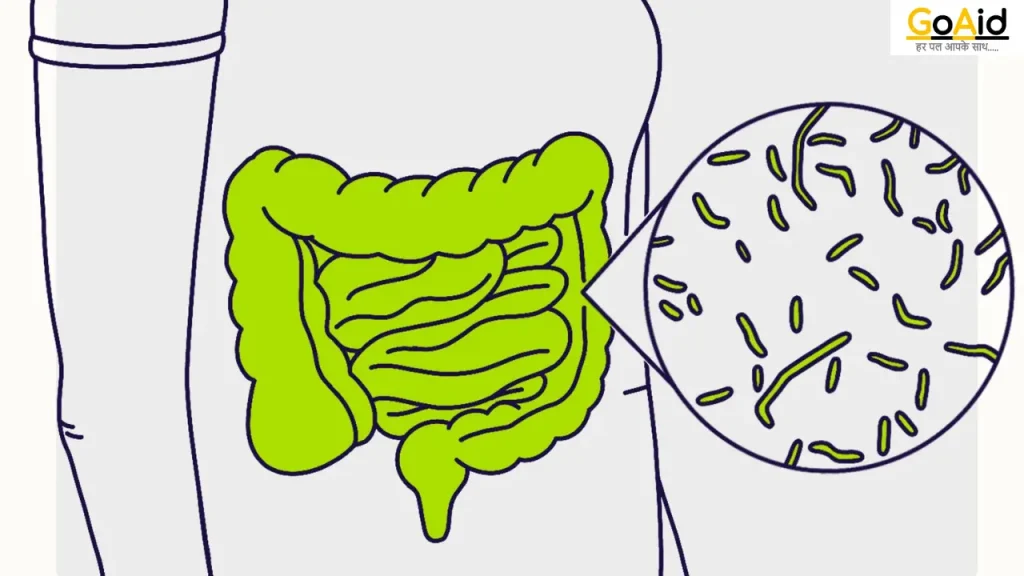
Diarrhea is a condition characterized by frequent, loose, or watery bowel movements. It can be acute (short-term) or chronic (lasting more than four weeks). Diarrhea can lead to dehydration, which is particularly dangerous for young children, older adults, and people with weakened immune systems. While diarrhea is often mild and resolves on its own, it can sometimes indicate a more serious underlying condition.
Symptoms of the Disease
The symptoms of diarrhea can vary but generally include:
- Frequent Loose or Watery Stools: The primary symptom of diarrhea.
- Abdominal Pain and Cramps: Discomfort and cramping in the stomach.
- Urgency: A sudden, urgent need to have a bowel movement.
- Nausea and Vomiting: Feeling sick to the stomach and possibly vomiting.
- Fever: Elevated body temperature.
- Bloating: Feeling of fullness or swelling in the abdomen.
- Dehydration Symptoms: Signs of dehydration, such as dry mouth, increased thirst, decreased urine output, and dizziness.
Causes of the Disease
diseases in summer Diarrhea can be caused by a variety of factors, including:
- Infections: Bacterial infections (e.g., Salmonella, E. coli), viral infections (e.g., Norovirus, Rotavirus), and parasitic infections (e.g., Giardia).
- Food Intolerances: Reactions to certain foods, such as lactose intolerance.
- Medications: Side effects of medications, especially antibiotics, which can disrupt the balance of gut bacteria.
- Digestive Disorders: Conditions such as irritable bowel syndrome (IBS), inflammatory bowel disease (IBD), and celiac disease.
- Poor Sanitation: Consumption of contaminated food or water, often due to inadequate hygiene practices.
Treatment
Treatment for diarrhea focuses on relieving symptoms and preventing dehydration:
- Hydration: Drink plenty of fluids, such as water, oral rehydration solutions (ORS), and clear broths. Avoid caffeinated and sugary drinks, which can worsen dehydration.
- Diet: Eat bland, easy-to-digest foods such as bananas, rice, applesauce, and toast (BRAT diet). Avoid dairy, fatty, and spicy foods.
- Medications: Over-the-counter anti-diarrheal medications (e.g., loperamide) can help reduce symptoms. In cases of bacterial infection, a doctor may prescribe antibiotics.
- Rest: Get plenty of rest to help your body recover.
- Seek Medical Attention: Consult a doctor if diarrhea is severe, persistent, or accompanied by high fever, blood in the stool, or signs of severe dehydration.
How to Prevent Ourselves from this?
Preventing diarrhea involves maintaining good hygiene and food safety practices:
- Wash Hands: Wash your hands thoroughly with soap and water, especially before eating, after using the bathroom, and after handling raw foods.
- Drink Safe Water: Ensure that the water you drink is clean and safe. Use bottled or boiled water in areas where the water supply may be contaminated.
- Practice Food Safety: Cook food to safe temperatures, avoid cross-contamination, and refrigerate perishable foods promptly.
- Be Cautious with Raw Foods: Avoid consuming raw or undercooked meats, unpasteurized dairy products, and raw seafood.
- Vaccination: Vaccinate children against rotavirus, which is a common cause of viral diarrhea.
- Travel Precautions: When traveling to areas with questionable water quality, avoid tap water, ice, and foods washed in tap water. Stick to bottled or treated water and foods that are thoroughly cooked.
Click here to get ambulance service: GoAid Ambulance Service
5. Sunburn
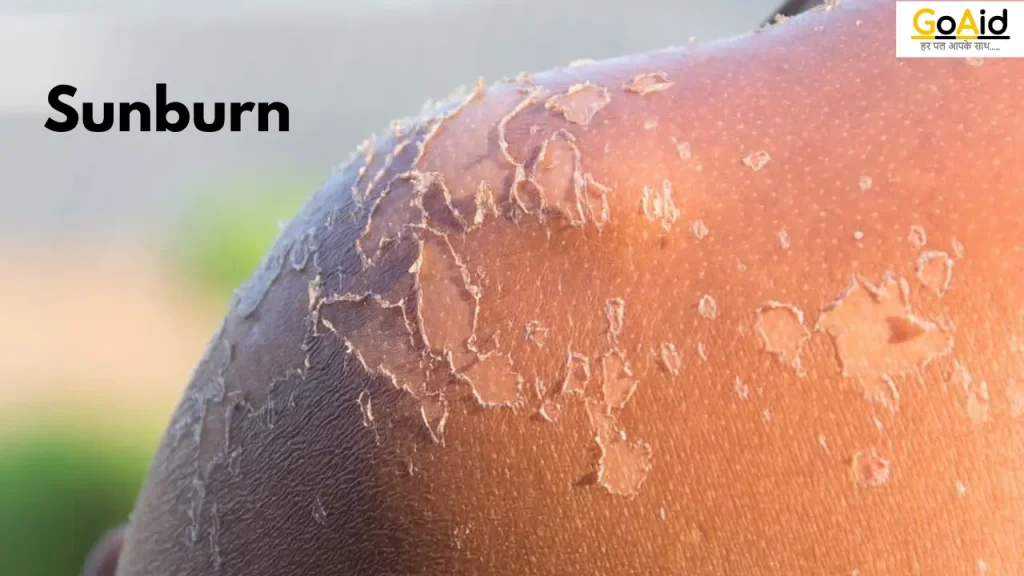
Sunburn is a type of skin damage caused by overexposure to ultraviolet (UV) radiation from the sun or other sources like tanning beds. It is a common condition, especially during the summer months when UV radiation is at its peak. Sunburn can range from mild redness and discomfort to severe pain, blistering, and peeling of the skin. Prolonged or repeated sun exposure can increase the risk of skin cancer and premature aging of the skin.
Symptoms of the Sunburn
The symptoms of sunburn typically appear within a few hours of exposure and may include:
- Redness: The affected area may become red, swollen, and warm to the touch.
- Pain and Tenderness: The skin may feel tender, painful, or itchy.
- Blistering: Severe sunburn can cause blistering and peeling of the skin.
- Swelling: Swelling may occur in severe cases, particularly on the face and extremities.
- Headache: Some people may experience headaches, fever, and chills.
- Nausea and Fatigue: More severe sunburns can lead to symptoms like nausea, fatigue, and dizziness.
Causes of the Disease
Sunburn causes diseases in summer when the skin is exposed to UV radiation, which damages the DNA in skin cells. The primary causes of sunburn include:
- Sun Exposure: Spending too much time in the sun without adequate protection, especially during peak sunlight hours (10 a.m. to 4 p.m.).
- Lack of Sunscreen: Failure to apply or reapply sunscreen with sufficient sun protection factor (SPF) can leave the skin vulnerable to UV damage.
- Sensitivity to UV Radiation: Some individuals are more susceptible to sunburn due to factors such as fair skin, light hair and eyes, and a history of sunburns.
Treatment
Treatment for sunburn focuses on relieving symptoms and promoting healing:
- Cool Compresses: Apply cool compresses or take cool baths to soothe the skin and reduce inflammation.
- Hydration: Drink plenty of water to stay hydrated, especially if the sunburn is accompanied by fever or dehydration.
- Moisturize: Apply moisturizing lotions or aloe vera gel to the affected area to help hydrate the skin and promote healing.
- Pain Relief: Over-the-counter pain relievers like ibuprofen or acetaminophen can help alleviate pain and reduce inflammation.
- Avoid Picking or Peeling: Do not pick or peel sunburned skin, as this can increase the risk of infection and slow healing.
How to Prevent Ourselves from this?
Preventing sunburn involves taking proactive measures to protect your skin from UV radiation:
- Use Sunscreen: Apply a broad-spectrum sunscreen with SPF 30 or higher to all exposed skin, and reapply every two hours or after swimming or sweating.
- Seek Shade: Limit sun exposure during peak hours by seeking shade under trees, umbrellas, or canopies.
- Wear Protective Clothing: Cover up with lightweight, long-sleeved shirts, pants, hats, and sunglasses with UV protection.
- Avoid Tanning Beds: Avoid indoor tanning beds, which emit UV radiation and increase the risk of skin damage and cancer.
- Stay Hydrated: Drink plenty of water to stay hydrated, especially when spending time outdoors in the sun.
- Be Sun Smart: Be aware of UV index forecasts and take appropriate precautions to protect your skin, even on cloudy or overcast days.
6. Heat Rash
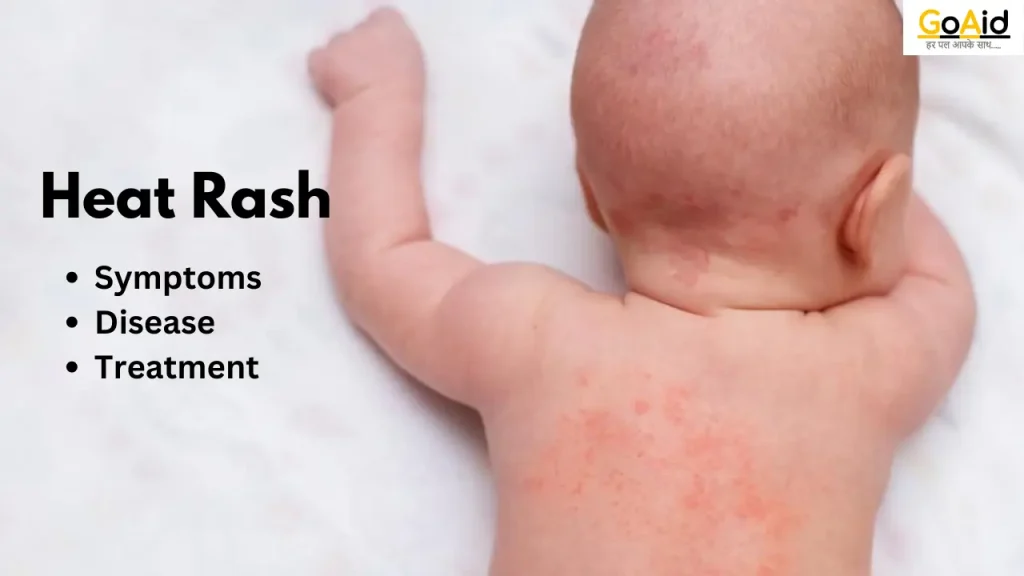
Heat rash, also known as prickly heat or miliaria, is a skin condition that occurs when sweat ducts become blocked, leading to inflammation and redness. It is common in hot, humid climates and often affects areas of the body covered by clothing or where skin-to-skin contact occurs. Heat rash is usually mild and resolves on its own, but it can cause discomfort and itching.
Symptoms of the Heat Rash
The symptoms of heat rash may include:
- Red Bumps or Tiny Blisters: Small, red bumps or blisters on the skin, often accompanied by itching or prickling sensations.
- Prickly Sensation: Feeling of tingling or prickling, especially in areas where sweat accumulates, such as the armpits, groin, neck, and chest.
- Itching: Mild to moderate itching or discomfort.
- Increased Sweating: Excessive sweating in affected areas due to blocked sweat ducts.
- Skin Irritation: Skin may appear inflamed or irritated, particularly in areas of friction or rubbing.
Causes of the Disease
Heat rash diseases in summer occurs when sweat ducts become blocked, preventing sweat from evaporating and cooling the skin. Factors that can contribute to heat rash include:
- Hot and Humid Weather: Heat and humidity can lead to excessive sweating, increasing the risk of sweat duct blockage.
- Overdressing: Wearing tight or heavy clothing that traps heat and sweat against the skin.
- Physical Activity: Vigorous exercise or activities that cause sweating can exacerbate heat rash, especially if clothing is tight or restrictive.
- Immature Sweat Ducts: Infants and young children are more prone to heat rash due to their underdeveloped sweat ducts.
- Prolonged Bed Rest: People who are bedridden or unable to move for long periods may develop heat rash in areas of skin-to-skin contact.
Treatment
Treatment for heat rash typically involves relieving symptoms and preventing further irritation:
- Cooling Measures: Take cool showers or baths to soothe the skin and reduce inflammation. Apply cool compresses or ice packs to affected areas.
- Keep Skin Dry: Avoid sweating excessively and keep affected areas clean and dry. Wear loose, breathable clothing made of natural fibers like cotton.
- Topical Treatments: Calamine lotion or over-the-counter hydrocortisone cream can help alleviate itching and inflammation.
- Avoid Irritants: Avoid using harsh soaps, lotions, or perfumes that can further irritate the skin.
- Stay Hydrated: Drink plenty of fluids to stay hydrated and maintain normal sweating patterns.
How to Prevent Ourselves from this?
Preventing heat rash involves taking measures to stay cool and dry in hot, humid conditions:
- Dress Appropriately: Wear loose, lightweight clothing that allows air circulation and wicks moisture away from the skin.
- Stay Cool: Avoid prolonged exposure to hot and humid environments. Use fans or air conditioning to maintain a comfortable temperature indoors.
- Take Breaks: If engaging in physical activity, take frequent breaks in the shade or indoors to cool down and rest.
- Use Powders: Apply talcum or cornstarch powder to areas prone to heat rash to absorb excess moisture and reduce friction.
- Keep Skin Clean: Bathe regularly to remove sweat and oils from the skin, and pat dry gently with a soft towel.
- Avoid Overheating: Be cautious when using electric blankets, heating pads, or heated car seats, as they can increase the risk of heat rash.
Also Read: Top 10 Safety Tips for Emergency Situations
7. Mosquito-borne Diseases (such as Dengue, Chickenpox and Malaria)
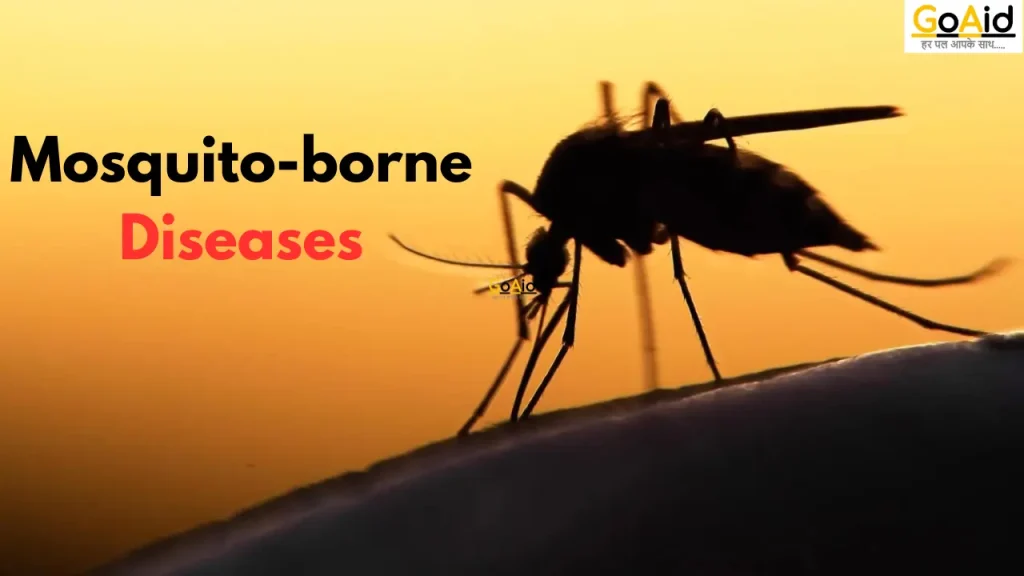
Mosquito-borne diseases are infections transmitted to humans through the bite of infected mosquitoes. Several diseases are spread by mosquitoes, including Dengue fever, Chickenpox (Varicella), and Malaria. These diseases are prevalent in different parts of the world and can have varying degrees of severity.
Dengue Fever:
About the Disease: Dengue fever is caused by the Dengue virus and is transmitted to humans primarily by the Aedes mosquito species.
Chickenpox (Varicella):
About the Disease: Chickenpox is a highly contagious viral infection caused by the Varicella-zoster virus. While it is commonly associated with childhood, it can affect individuals of any age who have not been vaccinated or previously infected.
Malaria:
About the Disease: Malaria is a potentially life-threatening disease caused by Plasmodium parasites, which are transmitted to humans through the bite of infected Anopheles mosquitoes.
Symptoms of the Mosquito-borne Diseases
Dengue Fever:
- High Fever: Sudden onset of high fever, often reaching 104┬░F (40┬░C).
- Severe Headache: Intense headache, typically behind the eyes.
- Joint and Muscle Pain: Pain in muscles, joints, and bones.
- Nausea and Vomiting: Feeling sick to the stomach and vomiting.
- Skin Rash: Rash that appears a few days after fever onset, typically on arms, legs, and torso.
Chickenpox (Varicella):
- Rash: Red, itchy rash that starts on the face and trunk and spreads to other parts of the body, forming small, fluid-filled blisters.
- Fever: Mild to moderate fever may accompany the rash.
- Fatigue: Feeling tired or lethargic.
- Loss of Appetite: Reduced desire to eat.
Malaria:
- Fever: Recurrent fevers, often with chills and sweating, occurring every few days.
- Headache: Severe headaches, sometimes accompanied by nausea and vomiting.
- Muscle Aches: Generalized body aches and fatigue.
- Anemia: Pale skin, weakness, and fatigue due to the destruction of red blood cells.
Causes of the Diseases
Dengue Fever:
Causes: Dengue fever is caused by the Dengue virus, transmitted to humans primarily by Aedes mosquitoes.
Chickenpox (Varicella):
Causes: Chickenpox is caused by the Varicella-zoster virus, which spreads through respiratory droplets or direct contact with the rash of an infected person.
Malaria:
Causes: Malaria is caused by Plasmodium parasites, transmitted to humans through the bite of infected Anopheles mosquitoes.
Treatment
Dengue Fever:
Treatment: There is no specific antiviral treatment for Dengue fever. Treatment focuses on relieving symptoms and preventing complications, such as dehydration and hemorrhagic fever.
Chickenpox (Varicella):
Treatment: Treatment for Chickenpox usually involves managing symptoms, such as fever and itching, with over-the-counter medications. Antiviral medications may be prescribed in certain cases.
Malaria:
Treatment: Treatment for Malaria depends on the species of the parasite and the severity of the infection. Antimalarial medications are used to kill the parasites and cure the infection.
How to Prevent Ourselves from this?
Preventing mosquito-borne diseases and Chickenpox involves taking measures to reduce exposure to mosquitoes and the virus:
- Use Mosquito Repellents: Apply insect repellents containing DEET, picaridin, or oil of lemon eucalyptus to exposed skin and clothing.
- Wear Protective Clothing: Wear long-sleeved shirts, long pants, socks, and shoes to cover exposed skin, especially during peak mosquito activity times.
- Install Screens: Use window and door screens to prevent mosquitoes from entering indoor spaces.
- Use Bed Nets: Sleep under insecticide-treated bed nets, especially in areas where Malaria is endemic.
- Stay Hydrated: Drink plenty of fluids to stay hydrated and maintain normal sweating patterns.
- Get Vaccinated: Vaccination is available for Chickenpox. Ensure that you and your family members are up-to-date with vaccinations to prevent infection.
Also Read: What are the Diseases Caused in Rainy Season
Conclusion: Common Summer Diseases
In conclusion, we have provided you with comprehensive guidance on the 7 most common diseases in summer: heat stroke, dehydration, food poisoning, diarrhea, sunburn, heat rash, and mosquito-borne diseases like Dengue, Chickenpox, and Malaria.
Now, getting understanding of the symptoms, causes, treatments, and prevention measures for these summer diseases is vital for staying healthy and safe during the hot summer months. If you have any further questions or concerns about these diseases, please feel free to ask in the comment box. Stay informed, stay vigilant, and take proactive steps to safeguard your health against these prevalent summer ailments.

